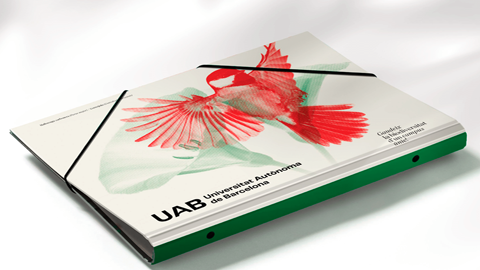Campus biodiversity at the centre of the new UAB folder
The UAB folder comes with a new design, this year focused on the value of the biodiversity found on campus as a richness and heritage of the UAB community. With a unique and diverse campus where almost 800 species have been identified, the UAB has chosen to turn its biodiversity into a symbol of its identity, and the new folder design aims to give a starring role to some of the plant and animal species found here: the hoopoe, milk thistle, great tit, golden-ringed dragonfly, morning glories, swallowtail butterflies, rush broom and poppies.

The UAB has decided to adopt the rich biodiversity of living species as a symbol of identity.
The new UAB folder boasts the rich biodiversity of the campus and gives prominence to four animal and four plant species: the hoopoe, the milk thistle, the great tit, the golden-ringed dragonfly, the morning glory, the swallowtail butterfly, the rush broom and the poppy which, combined, offer two different folder models.
The new design—which plays with different shades of greens and reds—comes with the slogan “Gaudeix de la biodiversitat d'un campus únic!” [Enjoy the biodiversity of a unique campus!]. The slogan will be accompanied by a specific UAB campaign aimed at informing the university community of this natural richness found on campus.
The underlying idea originated from a reflection made by Sandra Saura, professor of Ecology and researcher at CREAF. She argued that perhaps it no longer made much sense that, in times of drought, the UAB continue to use the grass fields, which are not very genuine in the Mediterranean, and even more so with climate change, as its main symbol of identity. Professor Saura proposed giving more visibility to all the biodiversity of the campus, which is very rich: "in fact, not many campuses have the privilege of having such a rich biodiversity," she said.
More than 800 species have already been identified on campus, collected and geo-referenced thanks to the citizen science in the "UAB Campus Diversity" project.